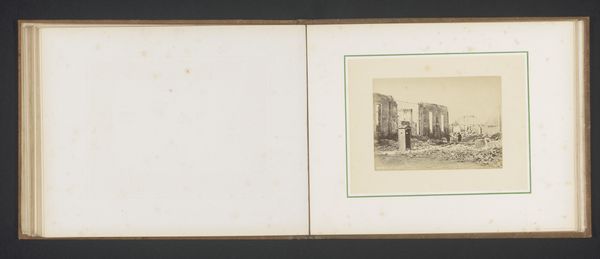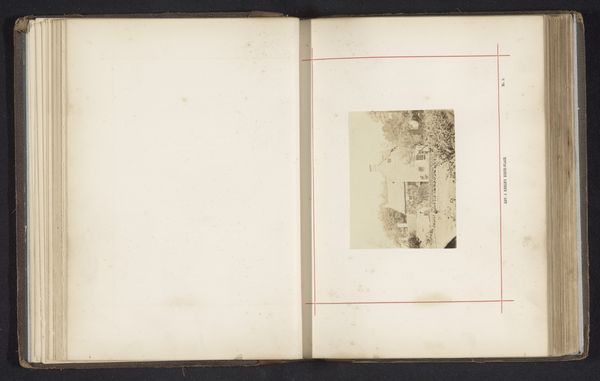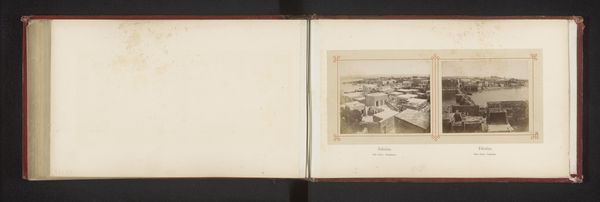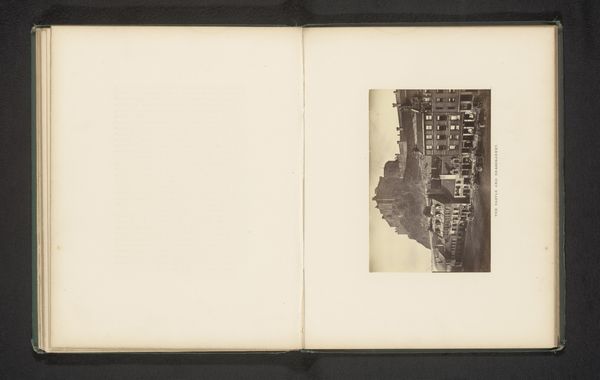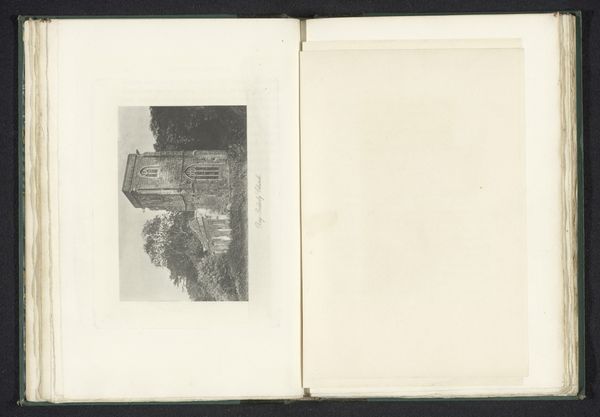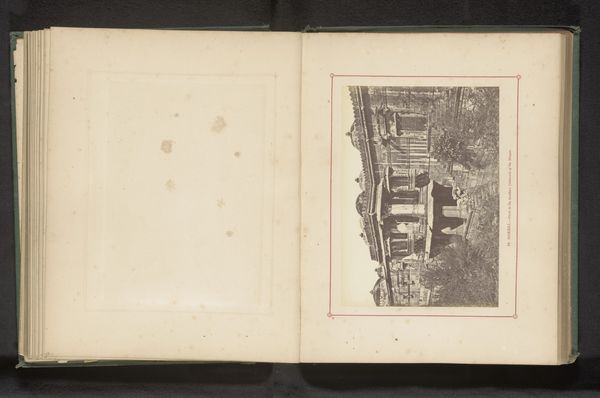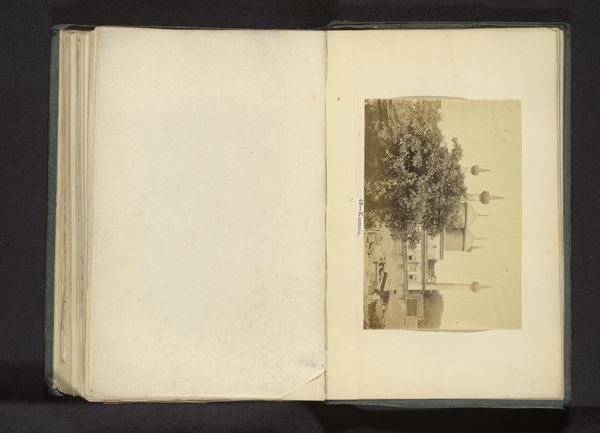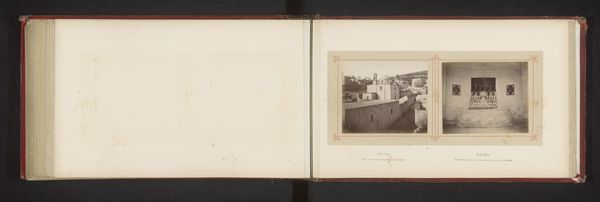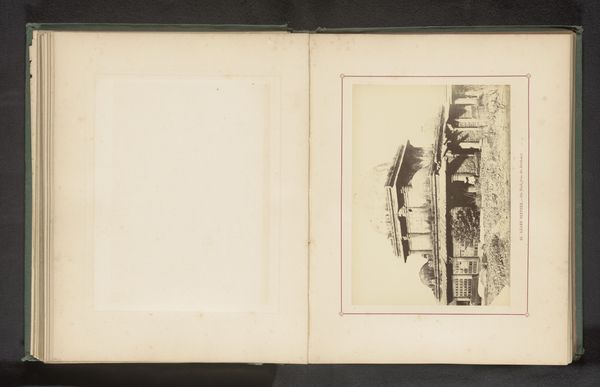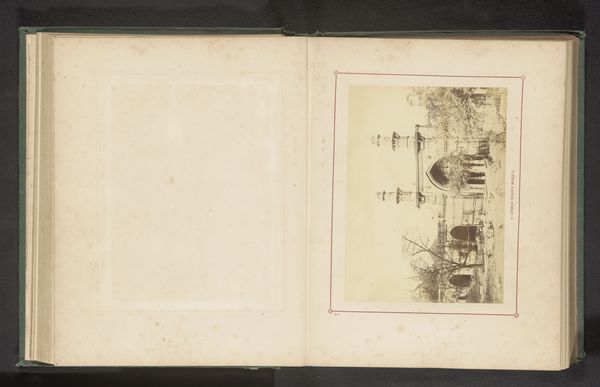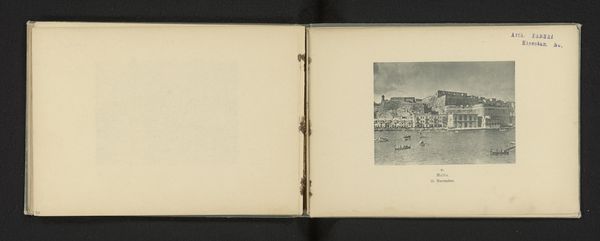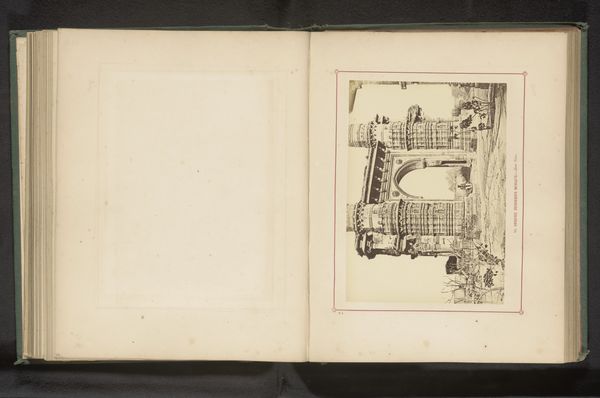
print, photography, albumen-print
#
pictorialism
# print
#
photography
#
cityscape
#
albumen-print
Dimensions: height 86 mm, width 53 mm
Copyright: Rijks Museum: Open Domain
Curator: Here we have “Vijftien gezichten op Bath,” or “Fifteen Views of Bath,” an albumen print likely created between 1860 and 1900 by J. & J. Dutton. It is, as the name suggests, a composite of various views within the city. Editor: It gives the impression of a finely crafted chocolate box assortment. The sepia tones lend a delicate air, while the neatly arranged images create a harmonious, if somewhat rigid, whole. Curator: Absolutely. Albumen prints like this were hugely popular, enabling a certain kind of mass consumption of art. These were hardly unique images, of course. We must consider who was granted the agency to immortalize the city through photography and who was, by consequence, overlooked in that act. Editor: That’s key. We see the architecture, the public spaces, but the everyday lives, particularly those from marginalized communities within Bath are missing. Were these commissions meant to document the industrial backbone that afforded leisure? Who funded and benefited from such photography? Curator: That points to the crucial element of access, or lack thereof, with respect to photographic materials themselves. Albumen paper, which this is printed on, wasn't exactly cheap. Think about the labour invested here; this necessitated considerable time, skill and thus expense, placing such objects firmly within the grasp of a specific socio-economic class. Editor: The images are clean, clinical almost, suggesting a detached, observational gaze. This objectivity, this supposed neutrality, only serves to highlight the absence of diverse narratives within this representation of the city. We’re looking at a specific, carefully curated narrative. Curator: Furthermore, let’s consider how easily such photographic practices dovetailed with, say, scientific pursuits, particularly in classification, documentation. There is something almost clinical in how these landscapes and buildings are cataloged. Editor: Ultimately, what is the intended purpose? A memento? A document? A promotional tool for the city? Understanding these questions, particularly considering its historical context, gives depth. It reveals not only what’s visible, but the intentional erasures present. Curator: Agreed, exploring these composite photographs requires looking not only at the cityscapes displayed but the systems, social strata, and manufacturing of photographic products that make their representation possible. Editor: These quiet, framed images beckon inquiry, and demonstrate just how political a cityscape view can be, both then and now.
Comments
No comments
Be the first to comment and join the conversation on the ultimate creative platform.
